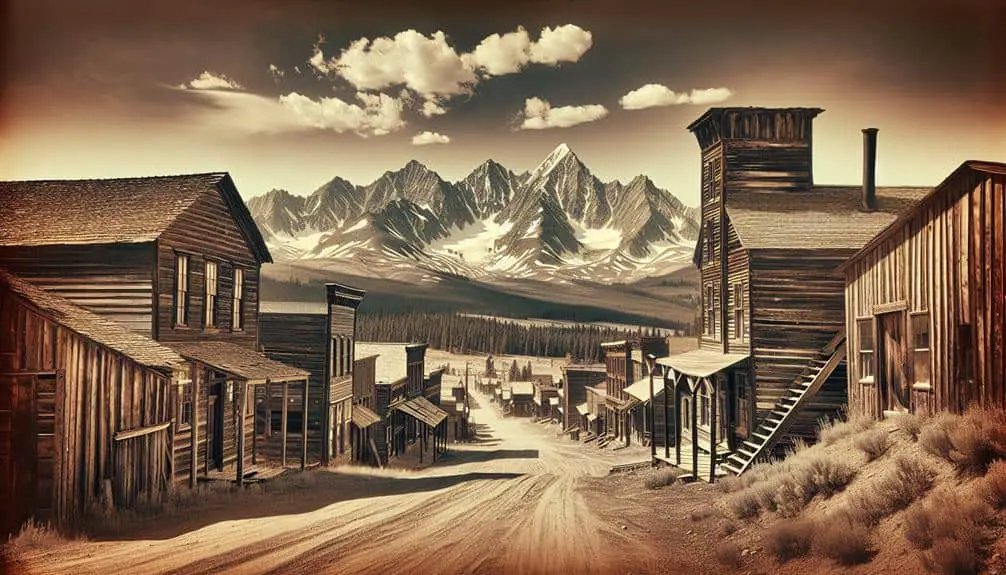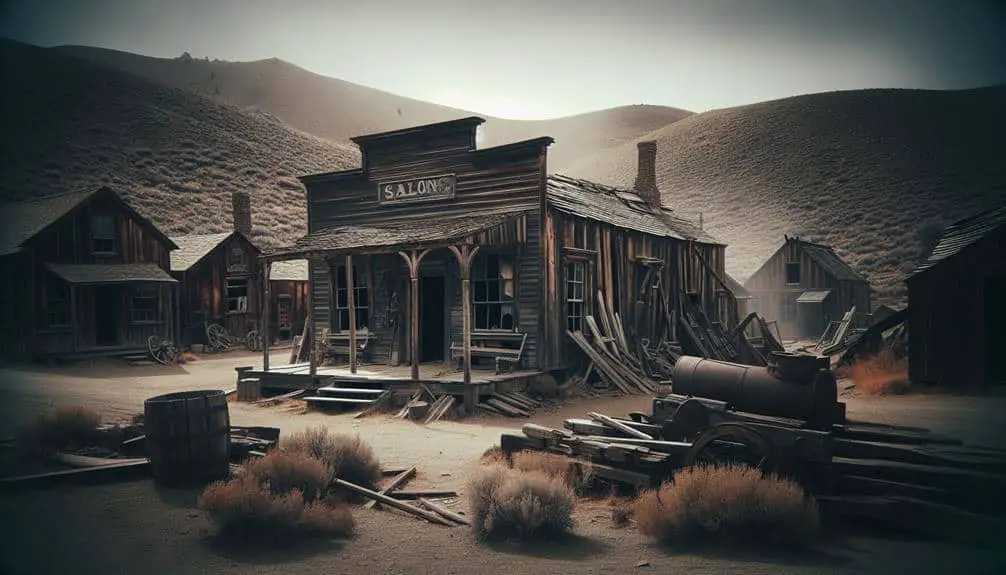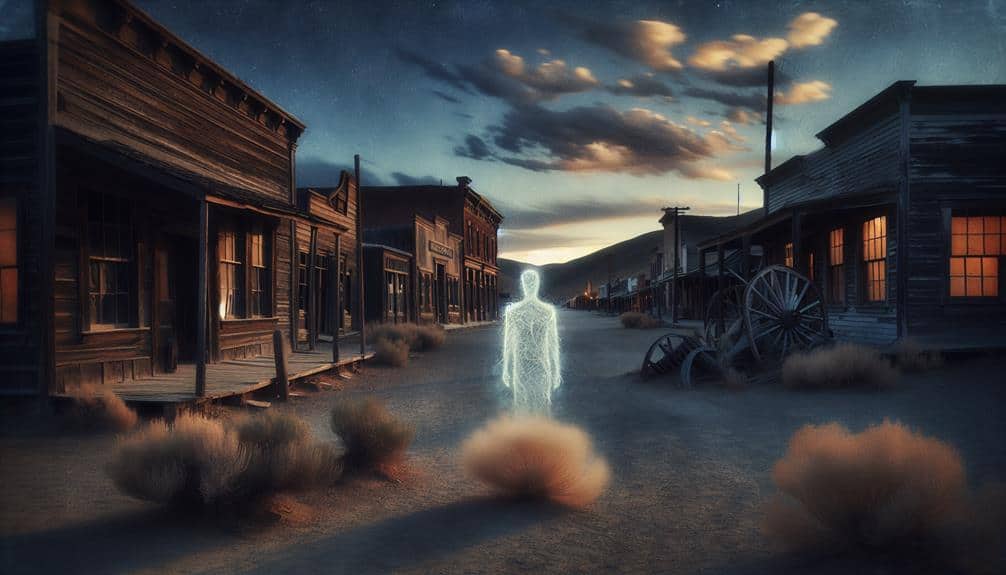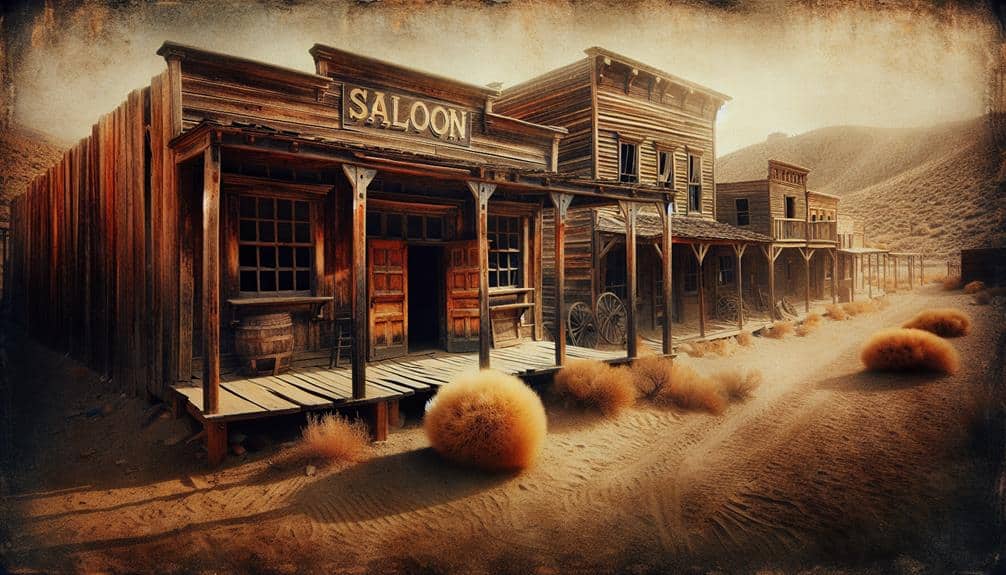Begin a journey through Montana's historic silver mining towns to uncover tales of boom-and-bust cycles and technological evolution. Virginia City offers Wild West charm with historic buildings and wooden boardwalks. Bannack, the First Territorial Capital, is a living museum of Montana's pioneering spirit. Experience Philipsburg's revived mining heritage with locally-owned shops and the Granite County Museum. Butte, the Richest Hill on Earth, reflects boom and bust cycles and technological advancements, despite environmental impacts. Explore these towns to delve deep into Montana's fascinating mining legacy, full of resilience and enduring stories of the past.
Key Points
- Visit Virginia City for an authentic Wild West experience.
- Explore Bannack, Montana's First Territorial Capital, for a glimpse into pioneer life.
- Discover Philipsburg's revived mining heritage through historic sites and local charm.
- Learn about Butte, the Richest Hill on Earth, and its mining history.
- Immerse in Montana's silver mining legacy by exploring these historic towns.
Overview of Montanas Silver Mining History
Delving into Montana's silver mining history reveals a rich tapestry of boom and bust cycles, shaping the landscape and economy of the state for generations. The mining techniques employed during the silver rush era were both innovative and arduous. Miners used traditional methods such as pickaxes and shovels to extract silver ore from deep underground. As technology advanced, techniques like hydraulic mining and tunneling became more prevalent, allowing for increased efficiency in extracting silver.
The economic impact of silver mining in Montana can't be overstated. The discovery of silver deposits attracted a surge of fortune seekers, leading to the rapid growth of towns and cities throughout the state. The influx of wealth from silver mining bolstered the economy, creating jobs and opportunities for many. However, the boom periods were often followed by busts as silver prices fluctuated, leading to economic downturns and the decline of once-thriving mining communities. Understanding the historical context of these mining techniques and economic fluctuations provides valuable insight into Montana's enduring legacy as a silver mining hub.
Virginia City: Preserved Wild West Charm
Nestled among the rugged landscapes of Montana, Virginia City exudes a preserved Wild West charm that transports visitors back in time to the era of silver mining prosperity. The town's preserved charm lies in its meticulously maintained historic buildings, which line the streets and offer a glimpse into the past. Walking down the wooden boardwalks, you can almost hear the echoes of cowboys and prospectors who once roamed these same streets.
Virginia City's historic buildings, such as the Opera House and the Bale of Hay Saloon, have been lovingly restored to their former glory, allowing you to step inside and experience the Wild West firsthand. The authenticity of these buildings truly sets Virginia City apart, making it a must-visit destination for history enthusiasts and those seeking a taste of the Old West.
Immerse yourself in the preserved charm of Virginia City, where the spirit of the Wild West lives on through its historic buildings and rich history. Whether you're exploring the museums, taking a stagecoach ride, or simply wandering the streets, Virginia City offers a unique opportunity to experience the magic of Montana's silver mining past.
Bannack: Montanas First Territorial Capital
What historical significance does Bannack hold as Montana's First Territorial Capital? Bannack, nestled in the heart of Montana, stands as a testament to the state's rich history. As the first territorial capital, Bannack witnessed the unfolding of Montana's formative years, marked by the gold rush legacy that shaped the town's destiny. The town's territorial architecture offers a glimpse into the past, with well-preserved buildings that echo the voices of pioneers and prospectors who once roamed its streets. Walking through Bannack, you can almost feel the energy of those early days, envisioning the bustling community that thrived on the hopes of striking it rich.
The gold rush legacy permeates every corner of Bannack, reminding visitors of the dreams and struggles of those who sought their fortune in the rugged Montana landscape. The town's territorial architecture, with its rustic charm and historic allure, serves as a living museum of Montana's pioneering spirit. Bannack stands as a symbol of resilience and determination, a place where the echoes of the past reverberate through time, inviting you to explore and uncover the treasures of Montana's first territorial capital.
Philipsburg: Revived Mining Town
In Philipsburg, the revival of its mining heritage breathes new life into a town steeped in history and resilience. This revived community showcases a perfect blend of preserving its past while embracing the present. As you wander through the streets, you'll notice charming historic buildings that house a variety of locally-owned shops, restaurants, and galleries. The town's mining history comes alive at the Granite County Museum, where you can explore the stories of hardworking miners and the impact of mining on the region.
Philipsburg offers a range of local attractions that cater to different interests. Whether you're a history buff, outdoor enthusiast, or art lover, there's something for everyone. From investigating old mining sites to hiking the nearby trails or enjoying live performances at the local theater, Philipsburg has a vibrant energy that invites you to immerse yourself in its unique culture. As you interact with the friendly locals and savor the small-town charm, you'll truly appreciate the spirit of this revived mining town.
Butte: The Richest Hill on Earth
Butte, known as the Richest Hill on Earth, stands as proof of the historic wealth and significance of mining in Montana. The town's legacy is deeply intertwined with the boom and bust cycles of the mining industry. At its peak, Butte was a bustling hub of mining activity, with copper being the primary focus. The advancements in mining technology during the late 19th and early 20th centuries played a pivotal role in Butte's prosperity, allowing for the extraction of vast amounts of valuable minerals from the earth.
However, this rapid industrialization came at a cost. The environmental impact of mining in Butte was substantial, leading to pollution of the air, water, and soil. The scars of open-pit mining are still visible on the landscape today, serving as a reminder of the environmental sacrifices made in the pursuit of wealth. Despite the challenges and controversies surrounding Butte's mining history, the town's resilience and spirit endure, embodying the enduring legacy of Montana's mining heritage.
Frequently Asked Questions
Are There Any Ghost Stories or Haunted Locations in These Historic Silver Mining Towns?
If you're curious about ghost stories or haunted spots in those historic silver mining towns, you'll find plenty of paranormal encounters, local legends, haunted tours, and supernatural sightings that add a spooky element to your exploration.
What Are Some Popular Outdoor Activities or Hiking Trails Near These Towns?
For outdoor enthusiasts, nearby trails offer a plethora of activities. From mountain biking to fishing, wildlife spotting to photography, these towns provide a playground for nature lovers. Discover the beauty that awaits!
Are There Any Unique Festivals or Events That Take Place in These Towns Throughout the Year?
Throughout the year, these towns host unique festivals and events. You can immerse yourself in local cuisine at food fairs or experience the rich heritage through cultural celebrations. Don't miss out on these vibrant experiences!
Can Visitors Try Their Hand at Panning for Silver or Gold in Any of These Towns?
Sure, you can definitely try your hand at silver panning and gold panning in some of these towns. It's a unique way to connect with the mining history and local legends of the area.
Are There Any Famous Residents or Historical Figures Associated With These Silver Mining Towns?
Yes, there are famous residents and historical figures associated with these silver mining towns. Notable landmarks and architectural history abound, providing insight into the lives of those who shaped these communities. Explore and learn!



